|
|
Review of GSM-handset Nokia 6131. Part 2
Live photos
of Nokia 6131>>>
Review of GSM-handset Nokia 6131. Part 1 >>>
Package:
- Handset: Nokia 6131
- Battery: Nokia BL-4C
- Portable battery charger: Nokia AC-3
- Stereo headset: Nokia HS-23
- User manual, short introduction
As we have already mentioned, Nokia has been ignoring clamshell segment for quite a while, and it had to introduce a model that could compete with Korean products. The leading role was given to Nokia 6131 (also known as Nokia 6136 as contract edition, but it has bigger functionality). Manufacturer had tried to create a solution that would be different from Korean models in terms of functionality, and will be to most consumer taste on the other. Such an all-around solution that can satisfy those who are looking for great specifications and those who care about design and special features.
It’s not a secret to anyone that Samsung prefers black color, and we can see most of its models colored in black. Perhaps this is the reason why main color for Nokia 6131 is black as well. At same time there are three additional color solutions – sandy, red and white. In all cases external display edging and case plastic is different. In case with black edition there is soft touch plastic, then additional color solutions don’t have this one. Black edition looks most preferable one, as it also makes phone look slimmer. One of reasons for that is presence of silver edging on case side. Other colors are mostly associated with middle class models by Samsung such as E380 (Felix).
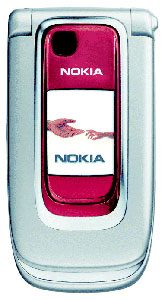
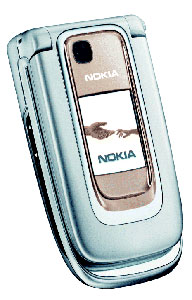 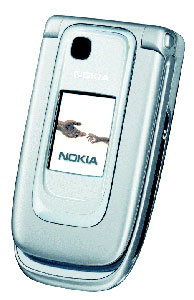
Model belongs to middle class segment, and designers were trying to give it extra charm, make it look more expensive than it actually is. For example battery cover has leather-like texture, although it is made of plastic. Quality of external display is fine, there are no problems with it. User feedback suggesting that plastic is looking cheap and so on, are not close to reality, this phone does look nice.



Certain dissonance is caused by numeric keypad design, it is made of glossy plastic which does not look expensive at all, and makes it look cheaper. It is exactly internal part of model that may create impression of inexpensive solution.
But let’s get back to phone’s outlook. Its dimensions are 92x48x20 mm. Weight stated on most Nokia web-sites is 112 grams, meanwhile real weight is 102 grams. This is stated by Nokia’s Russian web-site too. As you can see this handset cannot be classified as “slim” solution like Motorola V3i, Samsung D830 by this parameter. But there is no such task in front of it.
Video, comparing Nokia’s 6131 size with other handsets (wmv, 1.32 Mb)>>>


Presence of external buttons make this model extremely comfortable to use: there is volume adjustment button on left side, camera activation button on the right, as well as turn on/off button. With its help you can switch profiles without opening the phone. As for disadvantages, camera button gets pressed easily when phone is located inside your pocket. You won’t have faulty photos, but camera will be in stand by mode, and once you open clamshell you will see it. Other external buttons are not pressed that easily.

Interface connector was moved on top, and its cork which covers it is part of back cover. A slightly unusual construction, but it is convenient, you are not afraid to lose the cork, it is nicely fixed. Battery charger jack is open, and you can access it anytime. Headset can be connected only when handset is closed, when it is opened, upper part will be disturb it.



Loudspeaker that is used for playing ring tones (it is loud, but sound is not always clear), was moved to bottom part of right case side. Aperture is covered with fender, and usually dust gathers there, but it can be easily cleaned up with help of brush, or blown out auxiliary object. Hole for strap is located on top left side.
Besides several other peculiarities, this handset received automatic opening mechanism (it is mechanical, embodied with help of spring). You can see a button on top right corner, when you press it phone will open, and this operation occurs quite fast. We can’t say that this speed is extremely fast, it is just nicely measured and comfortable. Usually you close this handset you’re your hands, and as a rule you rest against glossy insertion on external part, this soils camera lens which is located there too.


Is it possible to open the handset without above mentioned mechanism? Well, of course you can. The other thing is that spring will be activated anyway, and upper part sort of jumps up. It is easier to teach yourself to use a button, this move will become automatic after some time. Mechanism quality does not call any doubts in its durability, it is highly unlikely that there will be any problems with it. Quite seldom during manual opening, when phone is not opening completely due to some reasons (like holding it with your hand), mechanism can overtwist, model will not close instantly. You have to open it completely and close, everything will become normal again.
Auto-opening mechanism for clamshells had been well known on the market, Samsung was pioneer here with its model T200. Unlike mechanic solution a small motor was used instead, it could open and close the clamshell. This solution was unique when handset was released, by that time Samsung was not such a big name in Europe, as it is today. As a result this product turned into almost complete obilivion, its reincarnation was later on implemented in Samsung P510 model. It was released on the market in summer 2004 and was selling well mostly due to its functionality, not because of auto-opening mechanism. Samsung had dissuaded from this idea for quite a while. Release of Nokia 6131 had stimulated R&D center of Samsung to create a symmetric answer, but with a mechanic constituent instead of a small engine this time. Competition can sometimes be extremely interesting, it forces manufacturers to look on its own experience in a new fashion, to fit competitor initiatives. We can expect model with auto-opening mechanism from Samsung by end of 2006 – beginning of 2007.
Full analogue of mechanism used in Nokia 6131 is present in last Panasonic phone line-up for European market. Manufacturer powered several high-end and middle segment models with auto-opening mechanism. Sales shown that nobody is buying handset just because of this feature, and often he does not eve know about it. But during operational process people get used to opening mechanism and start liking it.
From this position Nokia as market leader can introduce fashion for auto-opening clamshells, make such mechanisms popular and in demand. Samsung had failed with this on its way of market conquer, brand perception was too weak at that moment, same problem was faced by Panasonic. Nokia’s situation is totally different: this brand gets great perception, so we’ll see how well the auto-opening mechanism will settle down for clamshells.
Video clip showing auto-opening mechanism in action (wmv, 2.92 Mb)>>>

You can see 1.3mpx camera lens on front panel. It is very simple, and we hsall discuss it later. External display has 128x160 pixel resolution (20x26mm, 1.36 inches), it can display up to 262000 colors (TFT). Quality of external display is good, although picture is not that bright, and looks rather dim. On the other hand it helps to acquire information when you are outdoors, it remains readable. You cannot read incoming messages when clamshell is closed, although the resolution is large enough for that. Caller’s photo ID is shown in full screen mode, finally. As for unusual features, we can highlight color indication: you will see screen blinking periodically in case of missed call. This function can be disabled in settings menu. You can install custom wallpapers for external screen, and change basic settings.
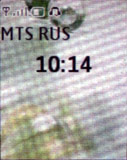 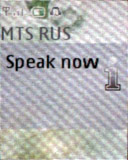
 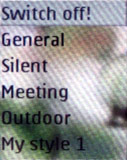
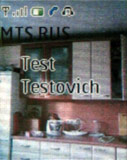 
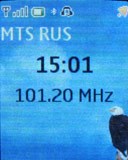
The inner display was enough within the first part of the review, thus I won’t repeat that again here and move straight to the keypad. The pad itself is made of plastic and features well-placed bulky buttons with fairly good click sensation. Speedy typing won’t be a big deal with them. The four-way navigation key incorporates “OK” key and also ensures favorable experience. The keypad is lit in blue and visible in most environments.



Over the first month the silver edging of the keypad gets scratched, but only a little – this happens due to the rubber pads, which prevent two halves from adjoining, being deformed. Though these grazes aren’t so striking, be sure they will be with time, and there’s no way to avoid that, since it’s a peculiarity of the handset’s design.

The back cover doesn’t expose any gap. Removing it you will reveal the MicroSD memory cards clot, located on the left side. Its construction match that of many today’s models, like Sony Ericsson W300i, Sony Ericsson Z710i, Motorola v360 etc., which implies that hot-swap is enabled here. Another attraction of the 6131 is that no limit on maximum size of memory cards is set.
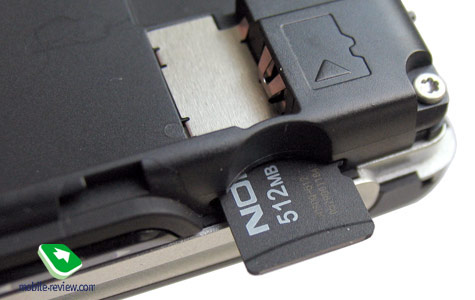
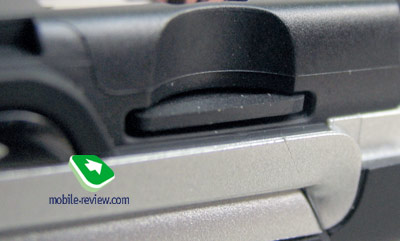
This models makes use of a 760 mAh capable Li-Ion battery BL-4C. A thing of note is that unlike other manufacturers, Nokia sticks to labeling batteries according to index and form-factor. So, Nokia 6131 is bundled with a 760 mAh battery, yet for other models it can be a 820 mAh one. And no doubt this brings certain mess into distinguishing accumulators, so now the company won’t cite battery’s capacity, but will rather highlight its specs, type and life time, for example. By the way, in all certification documents regarding Nokia 6131, this model carries a 820 mAh capable battery on paper.


As the manufacturer claims, the battery provides up to 3.4 hours of talk time and keeps the phone on for 240 hours in standby mode or 12 hours in music playback mode. In conditions of Moscow networks the device lasted for nearly 2 days at 45-50 minutes of calls, up to 2-3 hours of listening to the radio or music and constant Bluetooth operation. On average, it’s not possible to squeeze more than these two days in case you are not heavy on calls. Full recharging time is 2 hours.
There are no more capable batteries available for this model, at least official ones. The Chinese counterfeit may promise the capacity of 1050 mAh and 35-40 percent life time boost, however their reliability is questioned, in other words at best your phone simply won’t start up, or explode during recharging at a pinch. Nokia wouldn’t insist on applying only original batteries for no particular reason – it’s definitely not worth the risk.
Hardware features of Nokia 6131
Before proceeding to reviewing single functions and their quality, it would be better to hold up a little and cast a glance at hardware differences of Nokia 6131 from other S40-powered models. Particularly at what makes this handset look somewhat different and becomes its trumps or shortcomings.
Bluetooth. On the model’s announce in Cannes it was widely speculated that the handset will do well not only as a mid tier phone, but also will show off music capabilities including A2DP profile (stereo-sound transferring to Bluetooth-headset). These functions were demonstrated to all visitors at the exhibition, and it is onboard of the commercial units nowadays. So it was very strange not to find any paragraphs on A2Dp support in Bluetooth module certification documents.
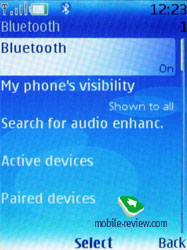 
These are the profiles claimed by the manufacturer for this model:
- Headset;
- Dial Up Networking;
- Object Push;
- File Transfer;
- Hands-Free v1.5;
- SIM Access.
On closer examination of Nokia’s official page, it turned out that every single mentioning of sound transferring to wireless accessories has went missing, even though earlier the site featured stereo-headsets HS-12W, HS-34W as supported ones (the certification documents, however, still include these gadgets). Thus all we had to do was to try it out, so we connected Sony Ericsson HBH-DS970 headset and surprisingly what we heard was music. The headset allowed not only listening to music, but also managing tracks list and displaying title on own screen.
The test went smooth – once we connected the headset and called up the media player, track title appeared on the screen, which meant that everything worked out. Nevertheless it wasn’t so perfect with the sound quality – not only did it come out with noises, but also it was monophonic, yet transferred to both earphones. Further experiments clearly displayed that Nokia’s developers couldn’t come up with an acceptable files coding scheme, therefore the handset carries nothing more but a half-finished solution. Full-scale support for stereo Bluetooth accessories is not available with this phone. Apparently, the fact Nokia’s engineers hadn’t had any previous experience of working with this technology, determined such failure. The main problem here is not to transfer sound to headset – on the contrary, it’s the simplest thing. Considering that music files have various bit rates, they need to be encoded prior to sending, the headset in its turn decodes the signal and then you hear the sound. That’s the stage, which Nokia’s engineers missed, namely the compression, in other words the phone transfers mono-sound, which needs no coding, bit rate evaluation etc. On top of that the only function available is volume control (rewinding, switching between tracks are absent). Basically all control modules are easy to implement, but here they had lower priority than the main goal. We cannot expect the support for A2DP to remain enabled on the 6131 – it is more likely to be removed.
Camera. The handset houses a 1.3 Mpix camera, which is quite incapable in light of nowadays criteria, but still enough for a model coming from the mid segment. Despite the proposals, already armed with 2 Mpix camera modules, the 6131 is not a camera-centric phone and therefore carries one of the cheapest solutions, providing fairly poor quality.
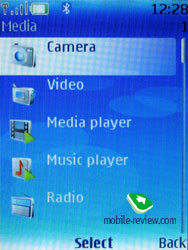 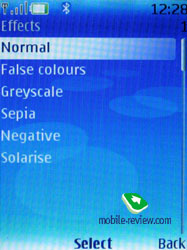
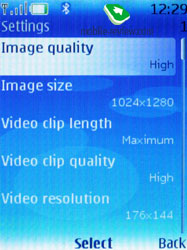 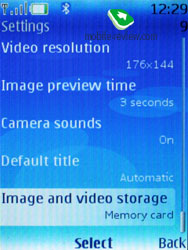
The following resolutions are supported:
- 1024x1280;
- 960x1280;
- 600x800;
- 480x640;
- 240x320;
- 120x160.
The last two minimal resolutions were added in order to allow taking snaps for wallpapers for internal and external display respectively. There are 3 JPEG compression types supported: default, normal, high. Since the quality leaves much to be desired in any case, better set compression to high – it won’t make the photos any worse.
Shutter sound may be turned off, the camera is equipped with a digital 8x zoom, though I wouldn’t recommend using it. You can choose the place to store all photos in – this may be either the phone’s memory or a memory card.
The effects may be laid onto taken photos – does applying them beforehand make sense, it’s up to you to decide. The following effects are available: False colours, Greyscale, Sepia, Negative, Solarise.
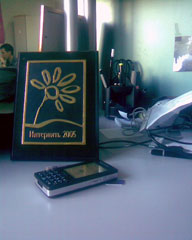 |
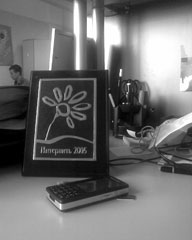 |
(+)
maximize, 1024x1280, JPEG |
(+)
maximize, 1024x1280, JPEG |
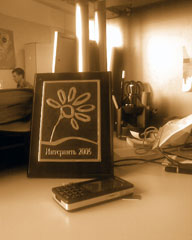 |
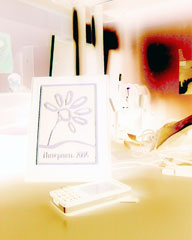 |
(+)
maximize, 1024x1280, JPEG |
(+)
maximize, 1024x1280, JPEG |
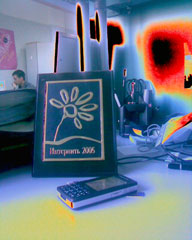 |
|
(+)
maximize, 1024x1280, JPEG |
|
When shooting indoors, the matrix exposes lack of sensitivity outright – darker objects get blurred with green stains, this goes especially for backgrounds. Turning the night mode on saves the day, yet the colors get dim – check this out on images with the glass of juice and the chair hack.
 |
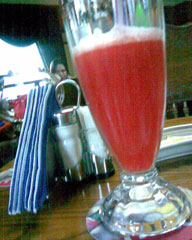 |
(+)
maximize, 1024x1280, JPEG |
(+)
maximize, 1024x1280, JPEG |
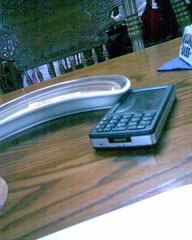 |
 |
(+)
maximize, 1024x1280, JPEG |
(+)
maximize, 1024x1280, JPEG |
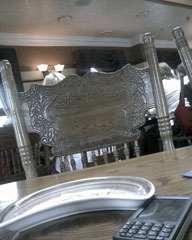 |
 |
(+)
maximize, 1024x1280, JPEG |
(+)
maximize, 1024x1280, JPEG |
 |
|
(+)
maximize, 1024x1280, JPEG |
|
Those, who are keen on multi-shooting, the camera offers a special mode, which enables you to take 3 pictures at a time. All settings are copied from the ones for single-shooting, including resolution. This is a time for self-shooting, however due to the fact the camera starts up when the handset is closed (the outer display doubles as a viewfinder), it won’t be very helpful.
Below you will find snaps taken in various environments – I guess no further comments are required, as you can make a conclusion on your own (maximum resolution, best quality).
 |
 |
(+)
maximize, 1024x1280, JPEG |
(+)
maximize, 1024x1280, JPEG |
 |
 |
(+)
maximize, 1024x1280, JPEG |
(+)
maximize, 1024x1280, JPEG |
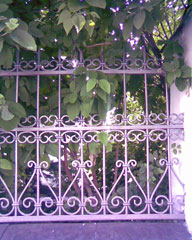 |
 |
(+)
maximize, 1024x1280, JPEG |
(+)
maximize, 1024x1280, JPEG |
 |
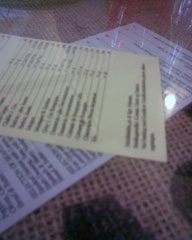 |
(+)
maximize, 1024x1280, JPEG |
(+)
maximize, 1024x1280, JPEG |
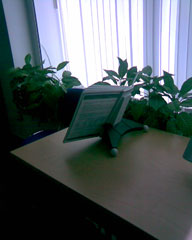 |
 |
(+)
maximize, 1024x1280, JPEG |
(+)
maximize, 1024x1280, JPEG |
 |
 |
(+)
maximize, 1024x1280, JPEG |
(+)
maximize, 1024x1280, JPEG |
 |
 |
(+)
maximize, 1024x1280, JPEG |
(+)
maximize, 1024x1280, JPEG |
 |
 |
(+)
maximize, 1024x1280, JPEG |
(+)
maximize, 1024x1280, JPEG |
 |
 |
(+)
maximize, 1024x1280, JPEG |
(+)
maximize, 1024x1280, JPEG |
 |
 |
(+)
maximize, 1024x1280, JPEG |
(+)
maximize, 1024x1280, JPEG |
Video. The handset is capable of capturing video in 3GP extension with the resolution of 128x96 or 176x144 pixels. Quality has three grades like single shots. Though the maximum duration of a single clip may be limited, it’s possible to go on recording until you have no free memory left. The quality is quite mediocre; it would have been strange to receive something different with such camera. All effects may be applied to video clips in the same way as to photos, their numbers totally coincide.
Video samples – High, 176õ144 pixels:
Video samples 1 (3gp, 363 Kb)>>>
Video samples 2 (3gp, 123 Kb)>>>
Video samples 3 (3gp, 370 Kb)>>>
Video samples 4 (3gp, 153 Kb)>>>
Short summary on camera. It’s a rare occasion when shots taken with the built-in camera appear with a number of flaws on the handset’s screens, even considering the screen’s specs and high camera resolution (though the camera comes from the first generation and is very cheap). As a rule such screens smooth away all shortcoming of snapped photos at low resolution, so that the images look fine and the difference becomes evident only when browsing the shots on PC. However on the 6131 all photos are mediocre in quality both on the phone and PC screens. Consequentially the camera is one of the 6131’s weakest points. It’s remarkable that when faced off against the VGA camera found on Motorola RAZR, the 6131 performs really well. Those keen on photography won’t be satisfied with the bundled camera module here, which is embedded rather for show than for real performance.
Music functions, radio, loudspeake
Lack of support for stereo-bluetooth can’t be referred to serious drawbacks of this handset, as many will more likely use it as a player with standard earphones plugged in. The bundled stereo-headset, the HS-23, is going to be the first on the junk list – the provided quality is quite average, thus it will come in handy only for talking but by no means for listening to music. It is especially striking when comparing the headset coming in one box with Nokia N91, or own earphones connected via AD-42 adapter (which doubles as a console on top of that). Turning back to the standard headset, pressing the button on them will result in switching radio station (Nokia 6233 features a different way). With the console managing the handset becomes a sheer pleasure.
Other fetching sides include background mode for radio and music player (hang up key). Both screens will display info on currently played track or radio station (though availability of such tags depends on picked theme for the external screen).
Video, radio and player in operation (wmv, 6.49 Mb)>>>

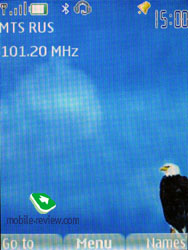
The radio volume is higher (actually at full blast the device sound enormously loud, so the 6131 receives best marks here) than that of majority of mp3-tracks played back in the media player. Nevertheless Russian tags of mp3-files are still not supported, so reading them is a real pain. At the same time the player shows off a slightly reworked interface which now enables you to see the whole list of tracks, instantly switch equalizers etc. Taking account of this device being not a music-centric one, the media player performs very well, although I suppose many will take Nokia 6131 as a music phone. And, the truth is, they will do it with good reason, as Nokia’s product competes with Sony Ericsson W300i or Sony Ericsson W710i in future as equals (the second handset, though, has higher class).
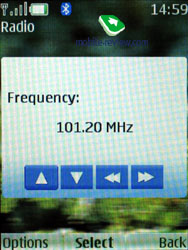 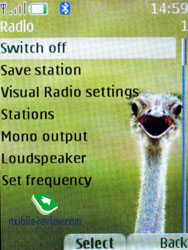
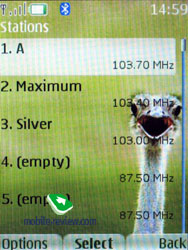
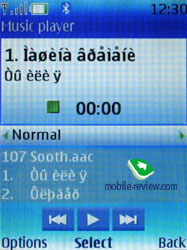 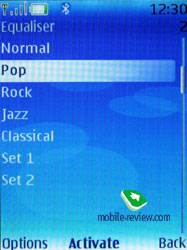
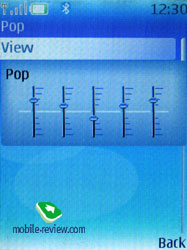 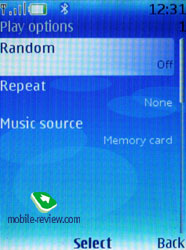
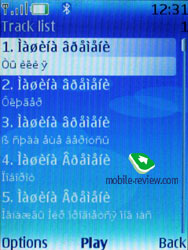 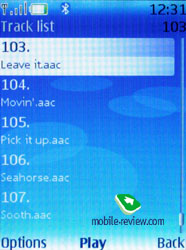
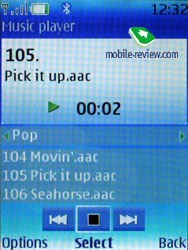
In handsfree mode music doesn’t lack volume, yet its quality leaves much to be desired, as a single loudspeaker will never provide clear sounding.
Peculiarities of S40 3rd editio
This paragraph covers all matters concerning several functions, which actually require more in-depth examination, but still refer to a basic software kit. If you wish, this is a short-list of features which seemed not always handy, usual or, on the contrary appealing, to me. A definitive description of functionality is coming up in the next part of the review, devoted to software only without side notes of pros and cons. What’s made us do so? In fact software standardization has eventually come to S40 platform; therefore we are to divide our articles into several specialized parts.
Demo-mode. Allows running the handset without a SIM-card onboard, you get access to majority of functions. Such feature is still a rare thing on ordinary handsets, thus the 6131 can rightfully come and boast a little here.
Flight Mode. The network part can be turned off in case you are in a plane or wherever mobile phones are prohibited.
Java-applications. Like any S40-powered handset, this phone can’t minimize applications, in other words if you’ve called up a particular app, you have to either work with it or shut down (radio and music are the only exceptions). Against the background of devices coming from the Sony Ericsson’s latest generation, empowering users not only to keep applications in background mode, but also to run up to three programs plus the media player, the 6131 appears pretty archaic. This is the place where the Nokia’s offspring yields to other devices.
Uploaded applications and DRM. Having received applications via WAP or from a PC, you will surprisingly find out that after installation you loose the last bit of control over them (this category of apps includes unprotected test utilities). An attempt to send such application to another device via Bluetooth will result in a failure since you don’t have the right to do so. At times it frustrates, in light of not knowing how to get rid of this restriction. Why would they block sending applications if DRM-rights checking cannot be implemented on the device – I’m not the one to be asked.
Calls list. Pressing the call key brings up the list of dialed numbers only. However, the very process of communication, as many see it, requires not only making, but also receiving calls. I frequently need to call back people, whose calls I’ve missed – when there are more than two of them, it’s impossible to do that without having to peek in the calls record. To access to general list, you will need to perform at least 3-4 actions, and this is pretty much inconvenient.
Incoming messages. The display doesn’t offer the information on sender – only amount of messages (e.g you have one unread message), and this isn’t the exact way it should be. In viewing mode name is taken from the phonebook.
BT-devices searching. The handset is always searching for new devices located nearby; you can’t pick a device residing in the list of already paired ones, and thus end up by having to spend a bit more time.
Phonebook. Unlike Nokia 6233, which is a business-solution, here you can store up to 1000 entries rather than 500. Regrettably, there is no way you can transfer contacts other than a business-card to external device, even via wireless interfaces, so that to send the entire phonebook you are forced to turn to a PC and MS Outlook as a go-between.
E-Mail client. I have an impression that my plaints, which have been expressed over this year, were finally taken account of. To cut a long story short, the e-mail client the 6131 is armed with is so advanced in comparison with the earlier versions, that it would make sense to write a separate article covering its capabilities. No doubt is retains a number of shortcomings and is more likely not to fit many business-users, but anyways the application itself is a remarkable leap up. The client will be covered in greater details in the next part of the review.
Voice dialing. Tags automatically get assigned to contacts in the phonebook, without having to train before. The flaw here is arguable reliability when it comes to browsing a mixed phonebook (i.e. which contains entries in two languages) or a lot of complicated last names with similar spelling (the phone simply goes mad and offers completely opposite names). Nonetheless the main part of the target audience usually doesn’t need to store so many entries and thus won’t have such issues.
Themes. The handset carries 7 various themes (good advice – the best one is Snake), though the amount of available themes is not limited with these only, therefore you don’t have to worry about your device being poorly customized. One of the best attractions of S40 today is themes. Below you will find a couple of photos of different themes, so you could make certain of their multiplicity and smoothness (don’t ask for them, by the way, we don’t send themes).
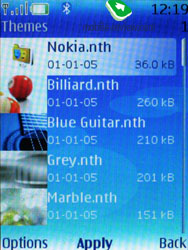 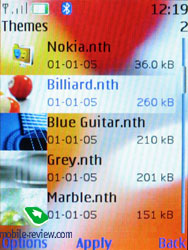
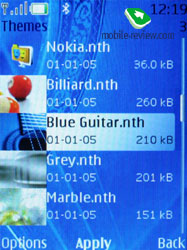 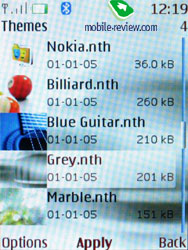
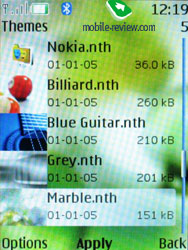 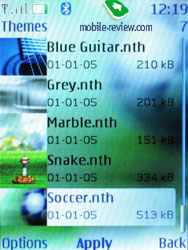
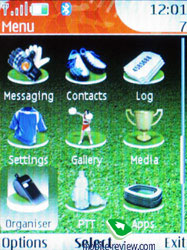 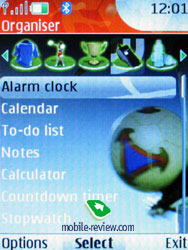
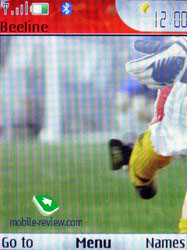 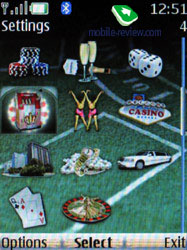
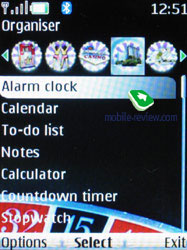 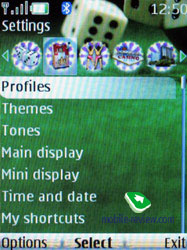
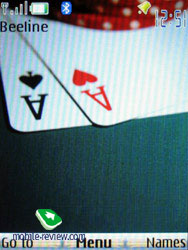 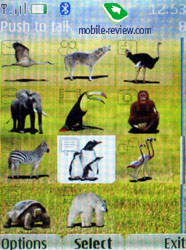
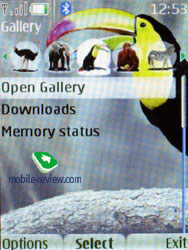 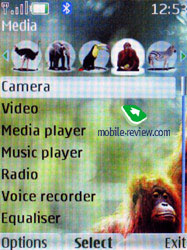
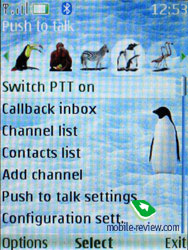 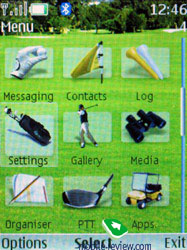
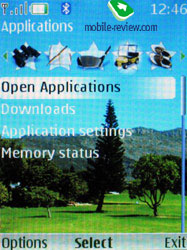 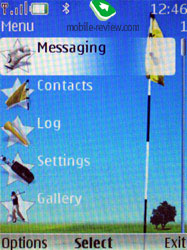
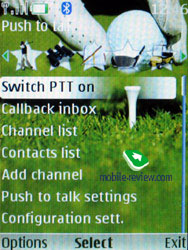 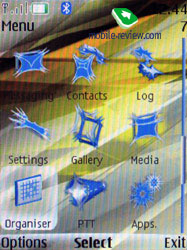
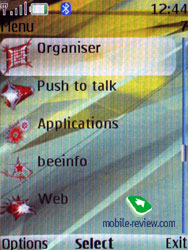 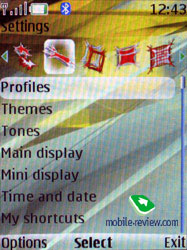
Localization. Even though there are several odd abbreviations and strange interpretations of certain terms, the overall localization quality is fairly good to provide two-way interaction between you and your handset.
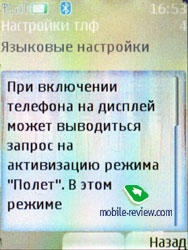 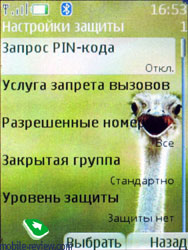
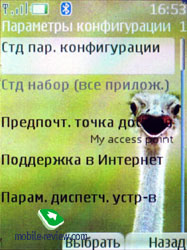 
Performance
The model’s interface is quite speedy, so we don’t have any gripes with it. For performance evaluation we used a set of Jbenchmark tests and according to the acquired results the handset is a little above average speed-wise and capable of displaying fairly impressive numbers.
Jbenchmark 1
Date 17.06.2006
Model name Nokia 6131
Firmware version
Jbenchmark 1 1.1.1
Version
Total Score: 1889
Details:
Text 434
2D Shapes 445
3D Shapes 316
Fill Rate 240
Animation 454
Screen Width 240
Screen Height 250
Color Screen true
Number of Colors 16777216
Double Buffer true
Total Memory 2097152
Free Memory 1878256
MicroEdition Configuration CLDC-1.1
MicroEdition Profiles: MIDP-2.0
Microedition Platform: 3,5
Microedition Encoding: ISO-8859-1
Microedition Locale ru-RU
Jbenchmark 2
Version 2.1.1
Total Score: 243
Details:
Image Manipulation 189
Text 220
Sprites 423
3D Transform 302
User Interface 158
Screen (canvas) Width 240
Screen (canvas) Height 250
Color Screen true
Number of Colors 16777216
JPEG Support true
Transparency (Alpha Level) 256
Double Buffer true
Total Memory 2097152
Free Memory 1281700
MicroEdition Configuration CLDC-1.1
MicroEdition Profiles: MIDP 2.0
Microedition Platform: 3,5
Microedition Encoding: ISO-8859-1
Microedition Locale ru-RU
Jbenchmark 3D
Perfomance
Jbenchmark3D HQ: 133
Jbenchmark3D LQ: 262
Triangles ps: 34713
kTexes ps: 1351
version: 3.1.0
Screen(canvas)width: 240
Screen(canvas)height: 320
3D Subsystem:
M3G Version: 1,1
Antialaising: false
True color: false
Dithering: false
Mipmapping: true
Perspective correction: true
Local camera lighting: false
Max lights: 8
Max Viewport dimensions: 1024
Max Texture Dimensions: 256
Max Sprite Crop Dimensions: 1024
Max Transforms Per Vertex: 4
Number of Texture Units: 2
Other properties
Color Screen true
Number of colors 16777216
Transparency (alpha level) 256
Double buffer true
Total memory: 2097152
Free memory: 398212
MicroEdition Configuration CLDC-1.1
MicroEdition Profiles: MIDP 2.0
Microedition Platform: 3,5
Microedition Encoding: ISO-8859-1
Microedition Locale ru-RU
Microedition Communication ports: COM0
Microedition Hostname: null
Jbenchmark HD
Version 4.0.3
Rendering Quality
Bilinear filtering: 99%
Trilinear Filtering: Failrule (80%)
Perspective correction: Failrule (85%)
Z-buffer depth: 14 bit or higher
Perfomance
Smooth triangles: 65232
Textured triangles: 53942
Fill rate: 1620 kTexels
Gaming: 116 (3.9 fps)
3D Subsystem:
M3G Version: 1,1
Antialaising: false
True color: false
Dithering: false
Mipmapping: true
Perspective correction: true
Local camera lighting: false
Max lights: 8
Max Viewport dimensions: 1024
Max Texture Dimensions: 256
Max Sprite Crop Dimensions: 1024
Max Transforms Per Vertex: 4
Number of Texture Units: 2
Other properties
Microedition Platform: 3,5
Number of colors 16777216
Transparency (alpha level) 256
Double buffer true
MicroEdition Configuration CLDC-1.1
MicroEdition Profiles: MIDP 2.0
CLDC (JSR 30, 139) 1,1
Encoding: ISO-8859-1
Locale ru-RU
Total memory: 2097152
Free memory: 1014240
MIDP (JSR 37, 118, 271) 2
Form width: 222
Form height: 250
Canvas Width: 240
Canvas Height: 250
Fullcanvas Width: 240
Fullcanvas Height: 320
Canvas doublebuffered: true
Color: true
Colors: 16777216
Alpha levels: 256
FC (JSR 75) 1
PIM (JSR 75) 1
Bluetooth (JSR 82) 1
Connected inquiry: true
Connected inquiry scan: true
Connected page: true
Connected page scan: true
Master switch: false
Connected inquiry scan: true
OBEX (JSR 82)
WMA (JSR 120, 205) 2
Smsc N/A
MMAPI (JSR 135) 1,1
Snapshots encodings: encoding=jpeg
Video capture: true
Video encodings: encoding=3gp
Streamable contents: none
Mixing: false
Recording: true
Audio encodings: amr, amr-nb
Audio capture: true
Web Parser (JSR 172): 1
WEB RPC (JSR 172): no
SATSA (JSR 177): no
Location (JSR 179) no
SIP (JSR 180): no
JTWI (JSR 185) 1
CHAPI (JSR 211): no
SVG (JSR 226): 1
AMMS (JSR 234): no
Global (JSR 234): no
Targeting and advertising campaign
Nokia 6131’s advertising campaign not only misses functionality, the concept resolves around impulse purchases. The commercial’s slogan is “So touching”, on top of that the clip doesn’t feature any technical peculiarities, the main stress is laid on design.

Trailer (mpg, 2.66 Mb)>>>
Reasoning from the handset’s targeting, one could rightfully conclude that it’s aimed mostly at women (additional color schemes are obviously meant for this audience). Though it’s not a rare occasion when marketing calculations turn out to be wrong, once have faced the market’s realities – this solution might appeal men as well, so that they will take up nearly a half of the sales. With the advent of all announced trims, the ratio is going to shift towards women (70 to 30), and the ads are going to contribute to that.
We got interested how Nokia itself conceives the product, and therefore asked Denis Mahanko, Brand Marketing Manager to comment: «This handset is very unique due to the fact both its functional and emotional advantages are coming together. You get a grip on it, play with its menus around for some time, and realize that the thing you’re holding is actually a finely built phone, where every single detail does its part well. Its curves, materials used, folding mechanism and other peculiarities – all together they simply make you want to keep the phone in your hands forever. It is touch&feel experience, which has become the base for our advertising campaign. The slogan “So touching” has double meaning. On one hand it emphasizes tactile feelings, and on the other hand let you imagine the first emotion arising in you in course of managing this phone. The ad, as well as the handset itself, is aimed at people who choose a phone not with the help of spec lists, but rather at those listening mostly to their instant perceptions (“like”-“dislike”). And so happens, this audience contains more women than men. But still we can’t say it is a women-only handset, especially if it’s faced off against phones for women, proposed by our competitors – small, shining clamshells».
Pre-installed application
The phone carries three games: Snake III, Soccer 3D and a flash-based Sudoku.
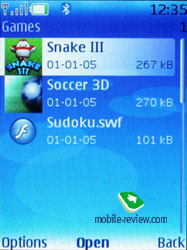 
 
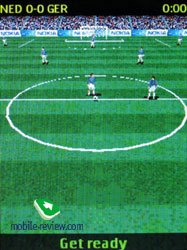 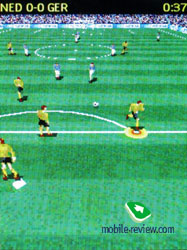
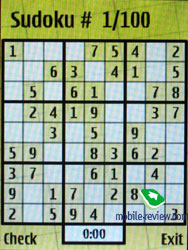
The applications are: World Time, Nokia Sensor (excellent offering for the youth, which is not so popular at the moment in light of the fact only a few devices have this function, yet it has great potential). The last app is Presenter, which allows handling presentations being demonstrated on PC with a bluetooth-module and special software by Nokia. In that case the phone doubles as a remote control.
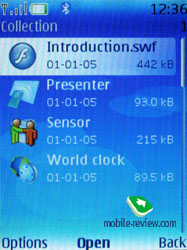 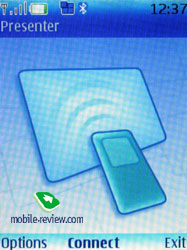
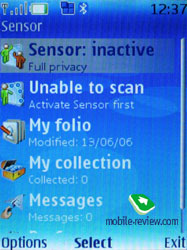 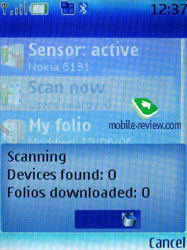
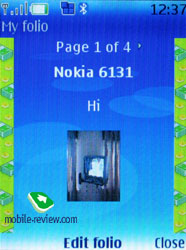 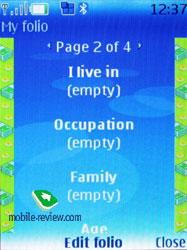
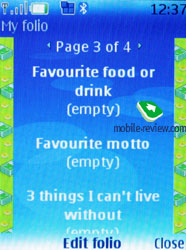 
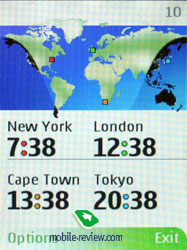
Impressions
The volume of 64-tone polyphony is enough for almost any conditions. The receiving part also does fine, as it equals all other phones of the current generation. The silent alarm is average strength-wise, but can be still felt while the handset is in pocket.
Initially, the model was aimed at being a mobile powerhouse, which would include all available functions: from music to standard applications. Nevertheless the market saw the release candidate lacking a number of functions (A2DP profile), but that didn’t effect the handset’s image at all. The 6131 is a notable phone owing to absence of an outer display protective screen, folding mechanism and two displays, which simply ooze quality. Poorness of the package originates from the intention to get the price as low as possible, but in this case the users have to run up expenses on a memory card (as the volume of bundled memory is miserable – 8 Mb), good headset and model AD-42 or a music adapter for own earphones. If your PC lacks a Bluetooth-module, purchasing a cable would also make sense.
As for the rivalry, Motorola V3i is going to bar the 6131’s road – it also aims at instant buys, has memory expansion slot and other specs nearing Nokia 6131 ones. On the other hand in terms of interface and basic functionality the V3i is far inferior to Nokia’s device. But it would be strange if a handset by Motorola didn’t have any trumps in its sleeve, namely these are materials used and quality of the casing. These two models are more likely to appear equal in consumers’ eyes in many ways, as to which his own. But for Nokia 6131, the very comparison with RAZR V3i is quite an achievement.
When it comes to music, Sony Ericsson W300i looks much more preferable due to the standard kit and price (SE’s solution is cheaper by 65-80 USD), but if we are to overlook the music capabilities, the W300i isn’t a direct competitor for the W300i.
Right now the market is waiting for a duo, Sony Ericsson W710i/Z710i, to be released, which will become the real opponent for the Nokia’s device. Functionality-wise they are pretty much the same, but Sony Ericsson holds the upper hand due to a better Java-engine, music part, more built-in memory and enhanced Bluetooth, yet yields a little to the 6131 as these models carry worse internal and monochromatic external (but they are bulky, so it might be a draw even) displays. Thus the competition between them is going to be really tough. The design of these handsets is different in every single curve, so their target audiences won’t be crossing too much. In my opinion the 6131 has been taken out from the age-group “under 23” to higher levels artificially, while the Sony Ericsson’s solutions are targeting mostly at youth.
When looking at the Samsung’s women-only line-up, it’s hard to spot a direct intersection with Nokia 6131, since personal feelings about the certain model step into limelight. However Samsung E530 has already made it to the charts top and seemingly isn’t going to give up, so Nokia 6131 will start competing with Samsung E770, similar in terms of functionality, but offering worse display and interface.
Speaking about Nokia’s own product line of folders, the 6131 is an undoubted flagship – don’t take comparisons with the 6125 seriously, as the 6131 beats it easily.

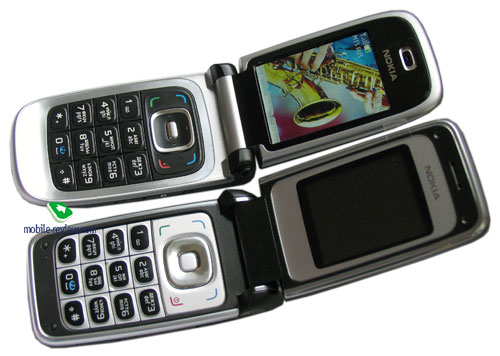
So, what our conclusion will be? Nokia 6131 retains a lot of various features peeped almost everywhere, but still it’s a solution with own unique face. It’s not a groundbreaking truth that all-in-one phones attract audience; combined with a well-known brad the 6131 is doomed to being a success, on top of that software issues are few and camera isn’t the sticking point for many. All in all the handset turned out to be pretty appealing and unusual, which also acts in its favor
Being the flagman, this handset is going to keep up having good sales - today it is almost s popular as Samsung’s best clamshells, yet yields a little to Motorola RAZR. Nokia 6131 can be rightfully endowed with the title of a “bestseller” – indeed it’s one of the best propositions in this class (with certain reservations, mentioned above). Owing to the re-worked interface the handset is handy in day-to-day usage.
The current price in Russia has been set at the level of 400 USD, which seems a bit high. With such poor package the 6131 should cost around 330-350 USD, but considering a model’s life time, this phone is more likely to be in demand over 2007 as well, when its price will fall down to 250-260 USD. Anyway, this phone is one of the best models released in 2006 – should you be looking for a clamshell, better consider this one as well.
Review of GSM-handset Nokia 6131. Part 1 >>>
Eldar Murtazin (eldar@mobile-review.com)
Translated by Alexandr "Lexx" Zavoloka (alexander.zavoloka@mobile-review.com), Oleg Kononosov (oleg.kononosov@mobile-review.com)
Published — 27 July 2006
Have something to add?! Write us... eldar@mobile-review.com
|
News:
[ 31-07 16:21 ]Sir Jony Ive: Apple Isn't In It For The Money
[ 31-07 13:34 ]Video: Nokia Designer Interviews
[ 31-07 13:10 ]RIM To Layoff 3,000 More Employees
[ 30-07 20:59 ]Video: iPhone 5 Housing Shown Off
[ 30-07 19:12 ]Android Fortunes Decline In U.S.
[ 25-07 16:18 ]Why Apple Is Suing Samsung?
[ 25-07 15:53 ]A Few Choice Quotes About Apple ... By Samsung
[ 23-07 20:25 ]Russian iOS Hacker Calls It A Day
[ 23-07 17:40 ]Video: It's Still Not Out, But Galaxy Note 10.1 Gets An Ad
[ 19-07 19:10 ]Another Loss For Nokia: $1 Billion Down In Q2
[ 19-07 17:22 ]British Judge Orders Apple To Run Ads Saying Samsung Did Not Copy Them
[ 19-07 16:57 ]iPhone 5 To Feature Nano-SIM Cards
[ 18-07 14:20 ]What The iPad Could Have Looked Like ...
[ 18-07 13:25 ]App Store Hack Is Still Going Strong Despite Apple's Best Efforts
[ 13-07 12:34 ]Infographic: The (Hypothetical) Sale Of RIM
[ 13-07 11:10 ]Video: iPhone Hacker Makes In-App Purchases Free
[ 12-07 19:50 ]iPhone 5 Images Leak Again
[ 12-07 17:51 ]Android Takes 50%+ Of U.S. And Europe
[ 11-07 16:02 ]Apple Involved In 60% Of Patent Suits
[ 11-07 13:14 ]Video: Kindle Fire Gets A Jelly Bean
Subscribe
|




























































































































